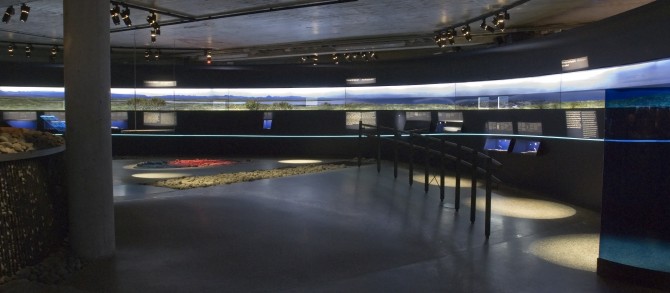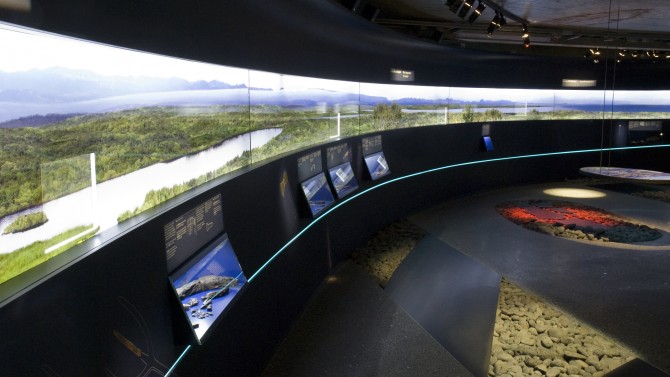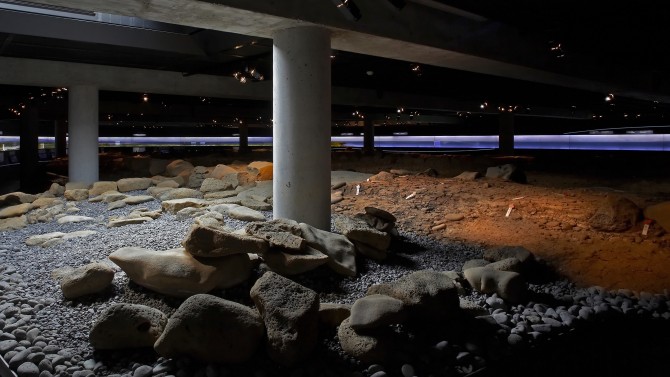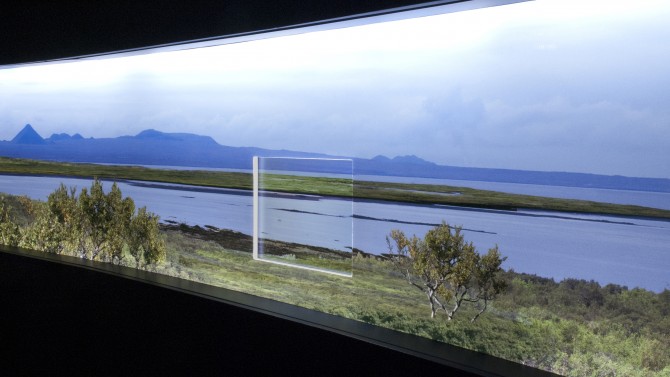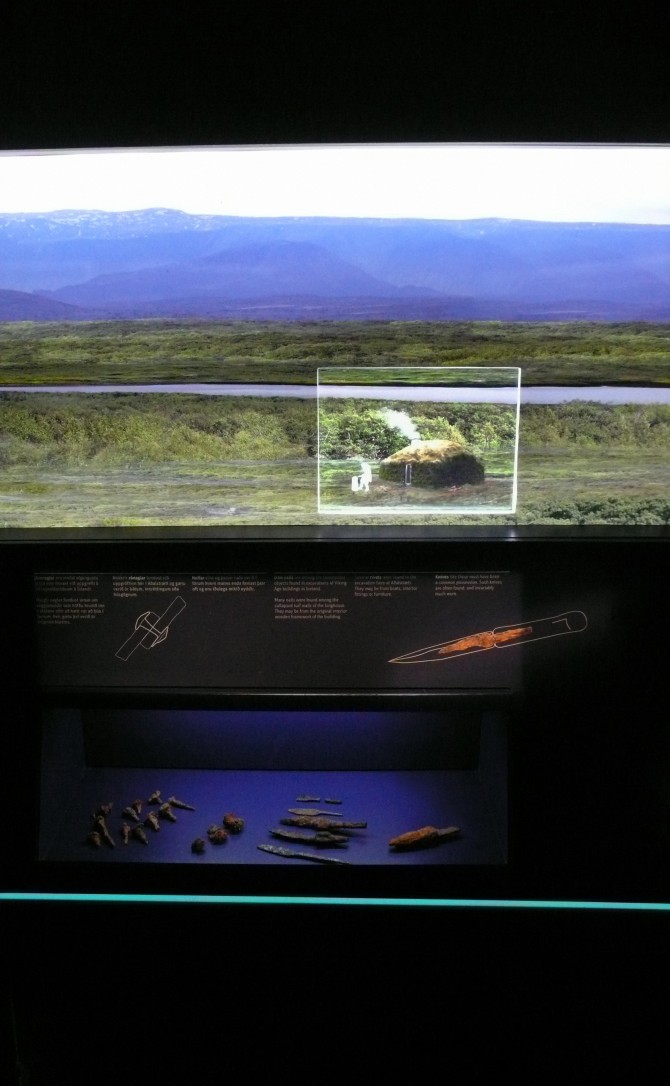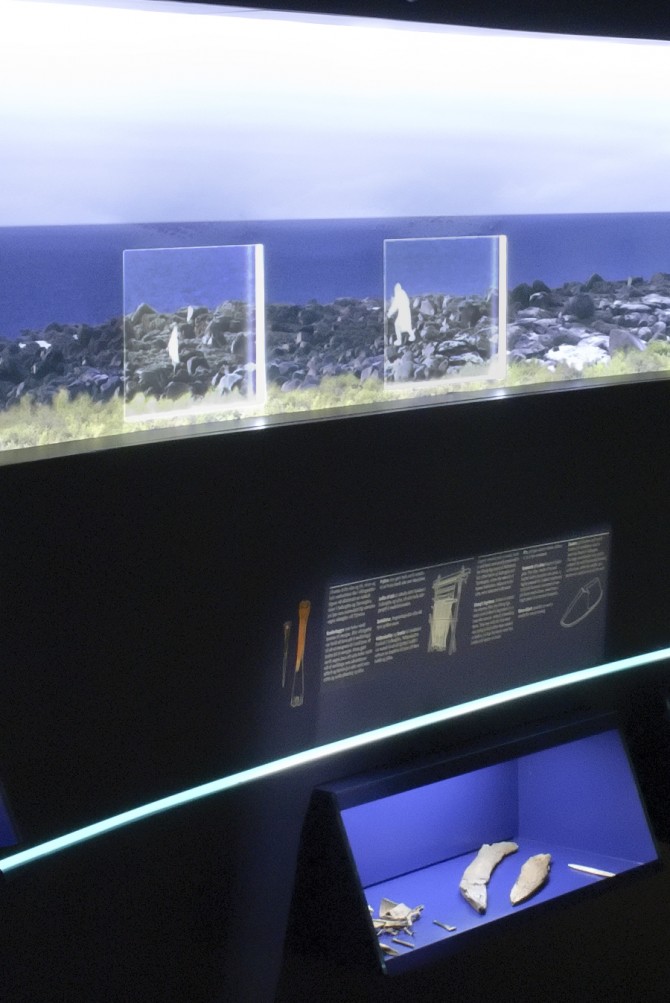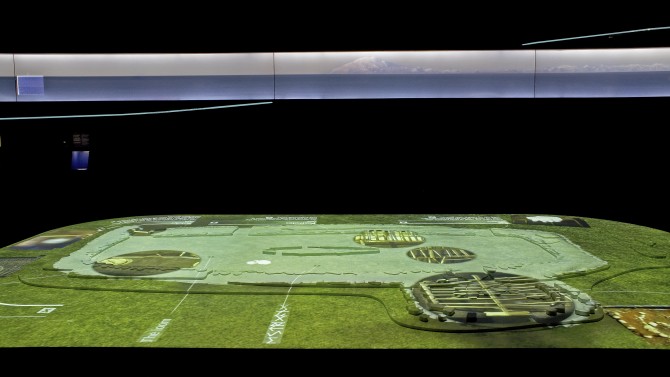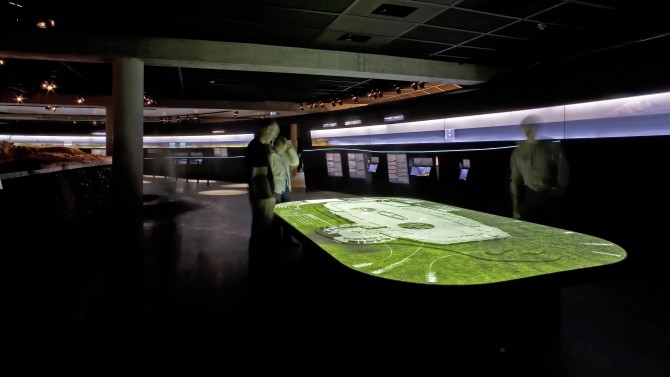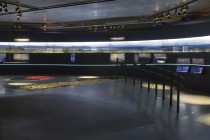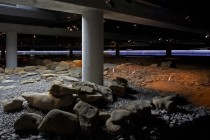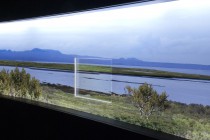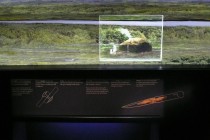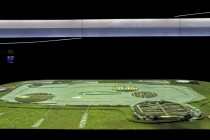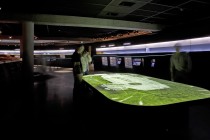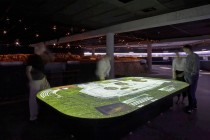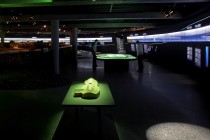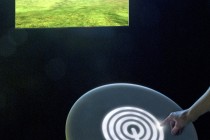Reykjavik 871+/-2, 2006
Reykjavik City Museum, Iceland
During the excavation works in 2001 for a hotel in the centre of Iceland’s capital, the oldest proof of settlement in Reykjavik was found. The ruins of a longhouse and of a turf wall can now be visited “on site”: the museum is situated in the basement of the new hotel; the longhouse’s former main room is part of today’s exhibition hall. ART+COM was awarded the contract to design the holistic media concept for the City Museum of Reykjavik.
An interactive media installation presents the ruin, dated around 930 AD, the way it probably looked when occupied. The touch-sensitive installation resurrects the inhabitants as ghosts and shows them in their daily activities. The pater familias is welcoming a guest, servants take care of the livestock and the kitchen, the housewife is dyeing cloth, a child is playing. Museum visitors gain information by activating texts and images telling more on life in Iceland’s Middle Ages. A spot light is also directed onto the relics found in the ruin. Touched by the visitor, they will show where they were located in the longhouse and explain their function. Additionally, the purpose of the building’s different rooms is described.
A second media station shows the hall in its probable former state. Following with his finger the circles on an interface, the visitor will experience 360° flights around the building on a big screen. In animations, the building of the longhouse is simulated and the different layers are depicted. Thanks to the connection with a real-time camera, the museum’s visitors are displayed as inhabitants of the building. They assume the same ghostly presence as the early settlers in the other installations.
A panoramic strip integrated into the wall provides a view on the former landscape surrounding Reykjavik. Numerous integrated monitors are connected to radar sensors activating animations only when visitors approach them. Furthermore, diffusers let the scent of fresh sea weed waft into the room.
